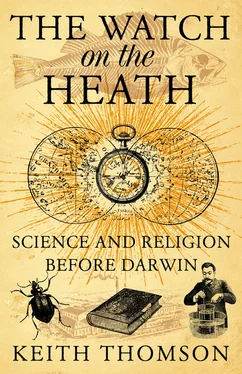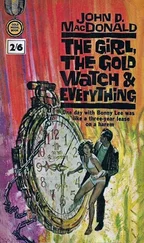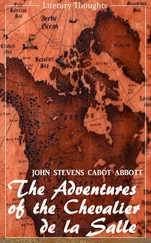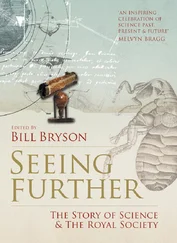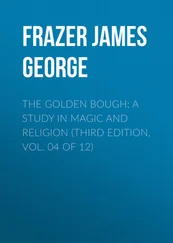He was born in 1743, the first child and only son of William and Elizabeth Clapham Paley. His father was headmaster of Giggleswick School and his mother a fine, intelligent woman, noted for her thrift. From them he inherited a flair for mathematics and a love of argument. Fifty-five years before Charles Darwin, he too entered Christ’s College, Cambridge, where he graduated first of his class (‘Senior Wrangler’) in 1763 and then stayed on as Fellow of the college, teaching philosophy and the Greek Testament. From the very first a brilliant and much-loved, if unconventional, teacher, he was ordained in 1767. But the celibate life of the university don was not for him and in 1776 he married Jane Hewitt of Carlisle and became a clergyman and writer. His teaching at Cambridge had been so successful that his friends pushed him to publish his lectures, some of which had formed the basis of his first book, The Principles of Moral and Political Philosophy (1768). 11 This book alone would have earned him a place in history, enjoying some twenty editions in his own lifetime. Morals was followed by an influential study of St Paul and then, in 1794, Paley wrote a third book, arguably greater still. A View of the Evidences of Christianity12 set out to show, conclusively and incontrovertibly, proofs of the historical truth of Jesus and the truth of his revelations. In this book, Paley put aside the exhortations of the pulpit in favour of the forensic techniques of the courtroom lawyer – a style that came very naturally to him. After graduating from Cambridge, he had for a while taught at a school in London. There he spent his spare time equally at the theatre and the law courts. Both seem to have polished his rhetorical skills. He may even have been seriously tempted by the field of law and become a leading barrister at the Inns of Court; for his was a mind drawn naturally to logic, and to proofs and precision; instead he became a barrister for Christ.
In Evidences , he took the role of counsel for the prosecution, basing his case on evidence from four witnesses, the authors of the gospels. The lives, and not least the terrible deaths, of the Apostles and the other early martyred saints of the Church provided reason enough to believe, resoundingly answering the atheists’ jibe: ‘Either the Apostles could not write more intelligibly of the reputed Mysteries or they would not’. 13 Paley also insisted upon the authenticity of miracles as the vehicle for God’s revelation of himself to man. They were an integral part of God’s design and the essential mode by which God could communicate with the works of his Creation. ‘Now in what way can revelation be made but by miracles? Consequently, in whatever degree it is probable or not very improbable that a revelation should be communicated to mankind at all, in the same degree it is probable or not very improbable that miracles should be wrought.’
Morals and Evidences brought Paley fame and a certain fortune and both became set books for examination of Cambridge students. (Remarkably enough, the last Cambridge students to be held responsible for the contents of Evidences sat warily down to their desks in 1920.) 14 But he never attained the bishopric that would have seemed the natural preferment for so revered a teacher and preacher. His highest appointment was Archdeacon of Carlisle. While his parishioners loved him, his peers may have found him just a shade too brilliant and too free with his ‘almost too unlimited indulgence of wit and drollery’ – for example in that advice to young clerics over sermons. 15 In Morals he had sided with Locke, whose work he had taught at Cambridge, over the right of people to revolt when their government failed in its responsibilities, a position he later abandoned in Natural Theology . And in one respect he was his own worst enemy – he refused to engage in ‘rooting’, his term for cosying up to people for influence. Nonetheless, the father of his great college friend John Law was Dr Edmund Law who, as Bishop of Carlisle, put a series of comfortable absentee livings his way, making sure that he had the security and contentment to write. The awkward man with his unfashionable accent and deep country manners was free to pour forth his brilliantly crafted texts, creating an intellectual achievement that has survived more than 200 years.
Evidences , with its insistence on the power of divine revelation, is obviously a mainstream Christian book, its goal to provide an independent line of support for the revelations that form the mainstay of Christian belief. It is often said of such books that their principal role is to comfort and confirm the believer rather than to persuade the atheist or sceptic, but in Paley’s case this would be a cheap sneer. His technique was not to appeal to faith but to reason. All Paley’s books are part of the maelstrom of ideas and movements that framed the Enlightenment and the Age of Reason. His 1802 masterpiece on God, through the strict logic of its author with all its strengths and flaws, visits the science of the age and the countervailing resistance of the natural world to simple arguments and neat solutions. Its full title is Natural Theology: or Evidences of the Existence and Attributes of the Deity collected from the Appearances of Nature . When, with the customary deference of the day, he dedicated his book to his bishop, Paley was at pains to point out that the work was intended to form a whole with his others, ‘a system … the evidences of natural religion, the evidences of revealed religion, and an account of the duties that result from both’. In fact, in Natural Theology a different, more liberal, Paley emerges, carefully writing to persuade the deist or Christian alike. For an analytical reader like Darwin, the differences between Evidences and Natural Theology were striking.
The logical basis of Paley’s argument would have been familiar to Darwin. The watch analogy was a syllogism, depending on the first two ‘Rules of Reasoning’ that Newton had laid down in his Principia Mathematica of 1687, the foundation stone of modern science: ‘We are to admit of no more causes of natural things than such as are both true and sufficient to explain their appearances [and] … Like effects proceed from like causes.’ Whether Paley can be thought truly to have abided by the first principle is debatable. What is true and sufficient is something to be determined, not taken for granted, in this debate. Newton’s second rule gives greater support to the argument: ‘Like effects [complexity] proceed from like causes [a maker].’ However, the Scottish philosopher David Hume, among others, had already given the case against this kind of thinking:
When we infer any particular cause from an effect, we must proportion the one to the other, and can never be allowed to ascribe to the cause any qualities, but what are exactly sufficient to cause the effect. And if we ascribe to it farther qualities, or affirm it capable of producing any other effect, we only indulge the licence of conjecture without reason or authority. 16
Elsewhere he wrote: ‘There can be no demonstrative arguments to prove that those instances of which we have no experience, resemble those, of which we have had experience.’ 17 In other words, one cannot be confident in explaining what we do not know from what we do know, because we don’t know what it is we don’t know. Time and again we find the sciences, like other disciplines, exhibiting just this weakness, with false conclusions being drawn because of an incomplete vision of possible causes that in turn limits the imagination. It took Einstein, for example, to break the belief that light invariably travels in straight lines; he could conceive of something others could not (before it could be shown empirically).
Читать дальше
